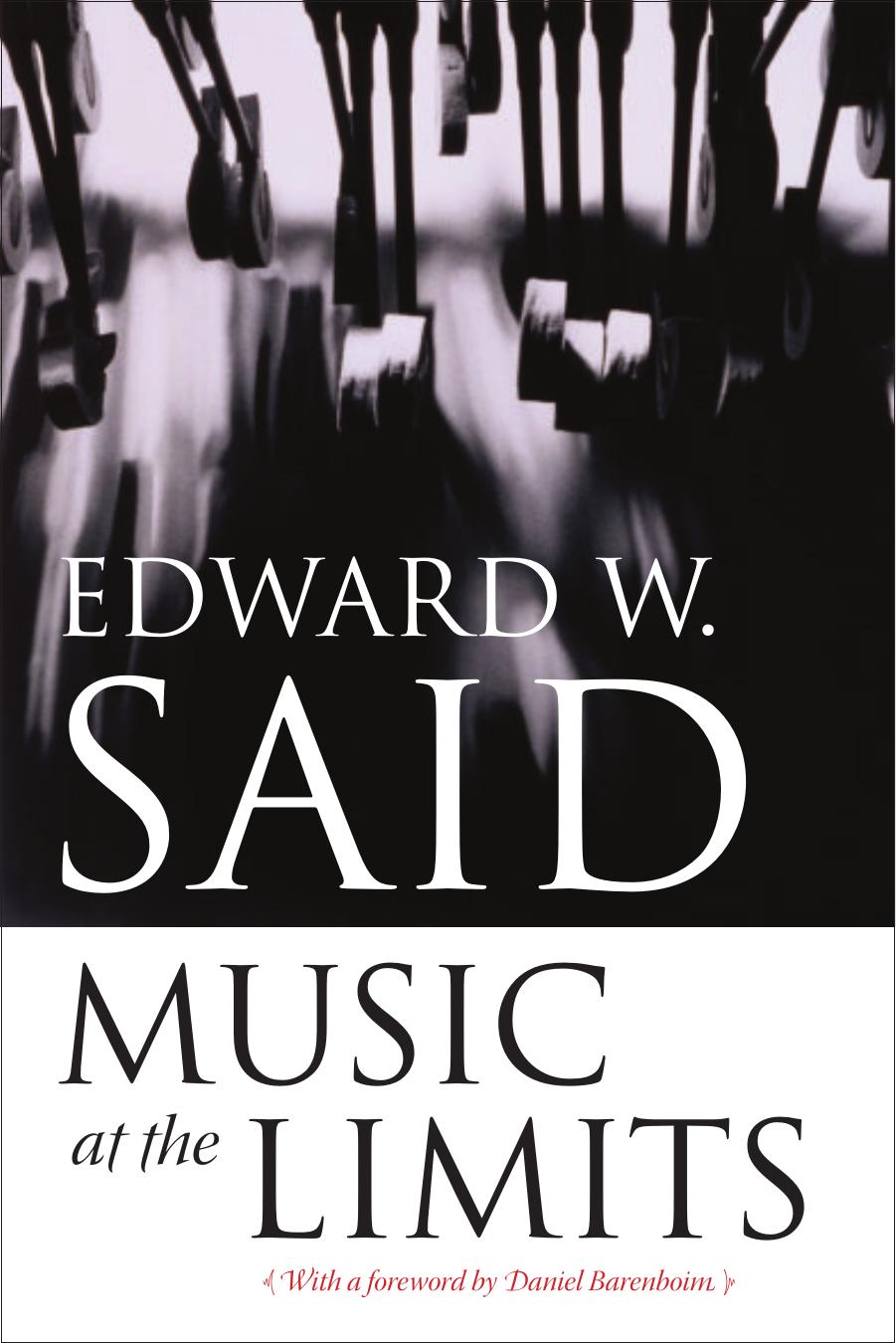Music at the Limits by Edward W. Said

Author:Edward W. Said
Language: eng
Format: epub, pdf
Tags: MUS006000, Music/Genres and Styles/Classical, MUS000000, Music/General
Publisher: Columbia University Press
Published: 2007-10-17T16:00:00+00:00
The Nation, January 25, 1993.
CHAPTER 26
The Importance of Being Unfaithful to Wagner
‘THE BEWILDERING variety of interests and standards in Wagner scholarship (or what passes for it) is congenitally resistant to study’. Thus John Deathridge, the leading Wagner scholar of the English-speaking world, at the beginning of his chapter on Wagner research in the Wagner Handbook. If so learned and au courant a scholar as Deathridge is daunted by trying to make sense of Wagner research and interpretation, what about the rest of us? For not only was Wagner both contemptuous of history in general and constant re-maker of his own history, but the enormous range of materials that have survived him (including, of course, his 15 operas) has made almost any relatively straightforward approach to him impossible. Deathridge deepens the problem by saying that even a Gesamtforscher (‘a versatile scholar who can do everything’) would probably fail to adjudicate or negotiate the discrepancies: between the fantastic quantity of sources and Wagner’s shifting ideologies, for example, or between Wagner and Wagnerism, or between the music and the texts. The difficulties are dizzying and appear limitless. ‘A viable view of Wagner research’, Deathridge concludes, ‘has more to do with the dynamics of history than with an absolute vision of how it should be’.
Hence the appearance of the Wagner Handbook and Wagner in Performance, handsome, amply-stocked volumes by many hands, surveying the Wagner phenomenon from numerous, not altogether co-ordinated contemporary perspectives. Most of the contributions on set design of musical styles (those of singers as well as conductors) are fascinating as a compendium of scholarly uncertainties allied with confident, sometimes overbearing brashness. Crucial to all this is Bayreuth itself, where Wagner believed he could control his work: in the case of Parsifal he was able to prevent its performance elsewhere. Bayreuth, however, was as much a centre of social authority and power as it was a trend-setter in aesthetics, with its hidden orchestra and conductor, its innovations in singing style, and its unusually uncomfortable seats. Deathridge correctly refers to Wahnfried (Wagner’s specially built house in Bayreuth) as often as he refers to Festspielhaus, because it was here that Wagner and later Cosima were able to keep the Wagner production engine on track; at Wahnfried after Wagner’s death Cosima and then her daughter-in-law Winifred all too effectively held court alone, as Syberberg’s chilling cinematic portrait of her attests. Hitler and Richard Strauss, Toscanini and Houston Stewart Chamberlain came there, as well as a whole host of lesser figures, sycophants, geniuses, philosophers, charlatans, and professional Wagnerians of every stripe and calibre.
One says all this about the bewildering richness of Wagner’s legacy with an eye of Paul Lawrence Rose’s Wagner: Race and Revolution, a book whose single-minded—albeit forceful and historically well-informed—account of the Wagner phenomenon renders the man and his operas pretty much as violent, revolutionary anti-semitism. Reading Rose, on the one hand, and, on the other, one of the chapters of the Wagner Handbook or Wagner in Performance, you would not realize that they are talking about he same thing, so different in tone and intent is Rose from the other two.
Download
This site does not store any files on its server. We only index and link to content provided by other sites. Please contact the content providers to delete copyright contents if any and email us, we'll remove relevant links or contents immediately.
The Goal (Off-Campus #4) by Elle Kennedy(13468)
Kathy Andrews Collection by Kathy Andrews(11708)
Diary of a Player by Brad Paisley(7460)
What Does This Button Do? by Bruce Dickinson(6123)
Assassin’s Fate by Robin Hobb(6102)
Big Little Lies by Liane Moriarty(5679)
Altered Sensations by David Pantalony(5030)
Pale Blue Dot by Carl Sagan(4886)
Sticky Fingers by Joe Hagan(4086)
The Death of the Heart by Elizabeth Bowen(3531)
The Heroin Diaries by Nikki Sixx(3479)
Beneath These Shadows by Meghan March(3249)
Confessions of a Video Vixen by Karrine Steffans(3230)
How Music Works by David Byrne(3157)
The Help by Kathryn Stockett(3067)
Jam by Jam (epub)(3004)
Harry Potter 4 - Harry Potter and The Goblet of Fire by J.K.Rowling(2973)
Strange Fascination: David Bowie: The Definitive Story by David Buckley(2782)
Petty: The Biography by Warren Zanes(2682)
